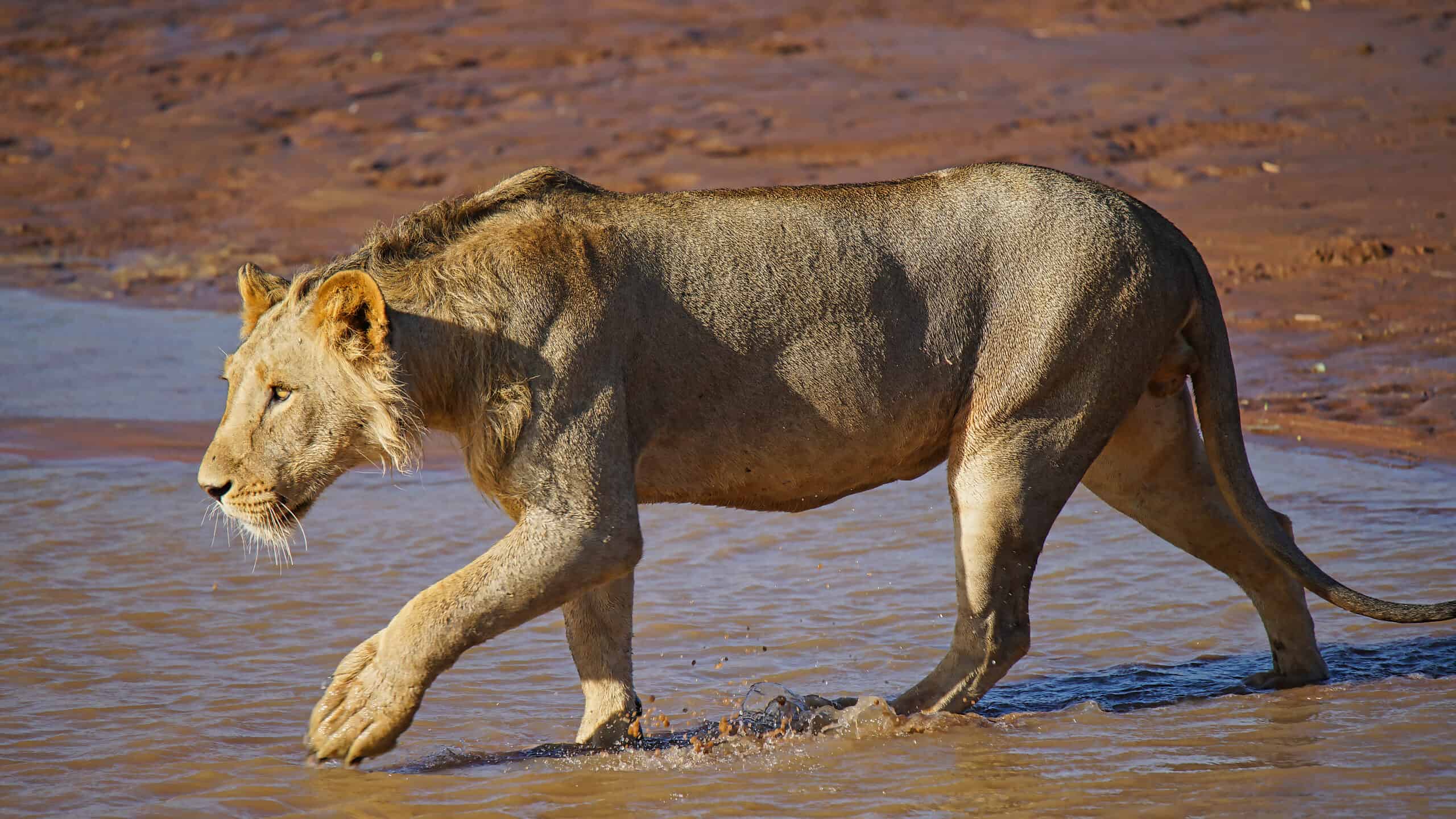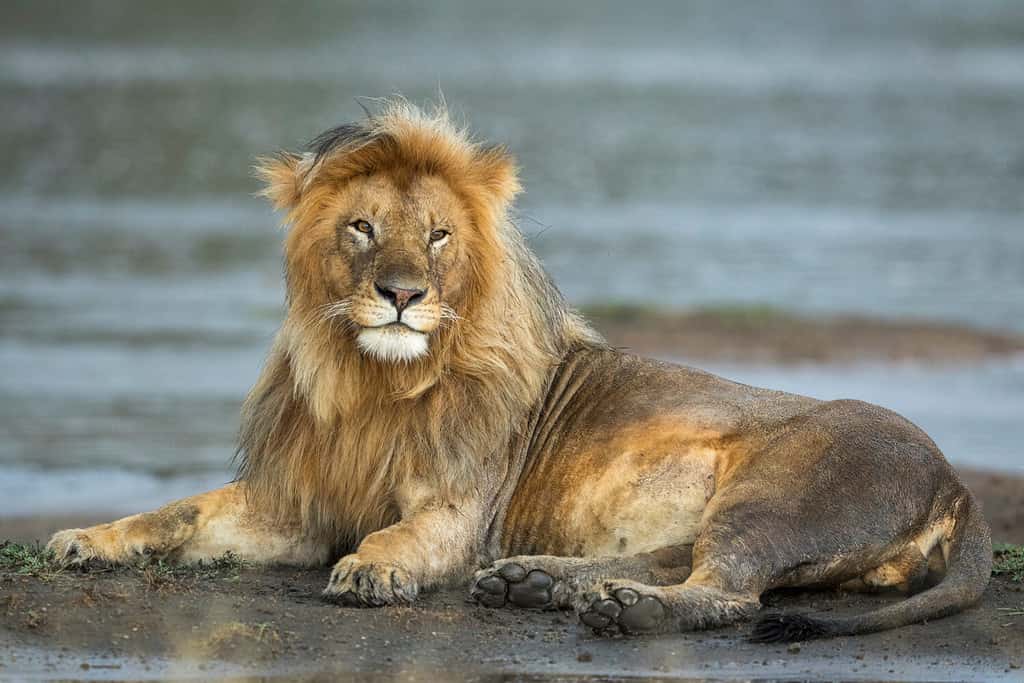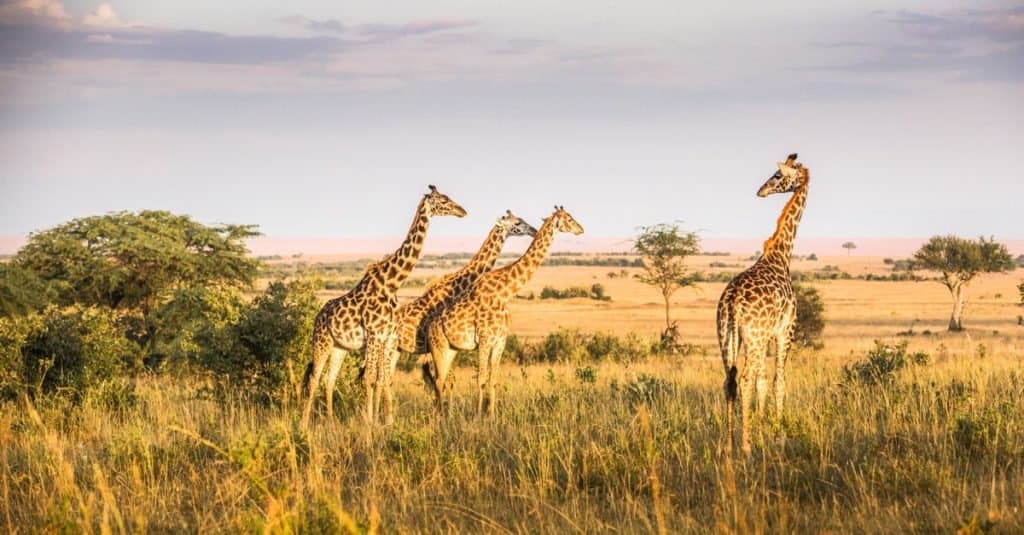Continue reading for our analysis...

Lions are obligate carnivores and must eat meat to survive. A large kill provides meat for many members of the pride and means that the lionesses can go for a while without having to hunt again. However, larger prey come with larger risks!
In this awesome clip, we get to see the amazing skills and bravery of two lionesses. They are accomplished hunters at the top of their game who have learned what it takes to hunt a giraffe. It’s obviously hard to watch a giraffe being killed but you cannot help but admire the courage of the lionesses.
Skilled Lions Hunting a Giraffe
The lionesses in this clip deliver a masterclass on how to hunt a giraffe. Learning is an important part of hunting behavior and not all lions could have pulled off a kill like this. It all starts with knowing where to find prey and the lions know that prey animals will have to come to the watering hole to drink so that is a good place to lie in wait. Giraffes do not always visit watering holes because they get moisture from plants but in the dry season they too have to make their way to water.

Lions are well camouflaged in long grass which helps a lot when stalking prey
©Riaan van den Berg/Shutterstock.com
Once the giraffe is spotted, they stalk it in a slow and patient way using the vegetation and terrain to remain hidden. The two lions also observe from different perspectives as they work out the best way and time to attack. Lions are generally the only predator that will attempt to take down a giraffe but it usually takes several of them to do so. Here there are only two!
The Lion Hunt Sequence

Lions eat various prey animals, such as giraffes and other hooved animals.
©Stu Porter/Shutterstock.com
It all starts with the stalk sequence when the lions move forward with their bodies low to the ground in a crouched position. You can see that their ears are flattened and their eyes are fixed on the target. If the prey glances in their direction, they freeze.
Once the giraffe splays her legs and lowers her head to drink, she becomes much more vulnerable. This is the moment to attack and the lions know it. Eventually, the giraffe senses the danger but by then the lions are already accelerating giving them a massive speed advantage.
Within minutes it is all over and the courageous lions have secured their prey.
Is it Normal Behavior for Lions to Attack and Eat Giraffes?

Lions will hunt and kill giraffes if given the chance.
©Ketan shah/Shutterstock.com
As a prominent predator in Africa, lions have a diverse diet that includes various prey animals, even giraffes on occasion. Their position as top predators allows them to skillfully hunt and consume young, elderly, and vulnerable giraffes with relative ease.
As carnivores, lions exclusively consume a meat-based diet, devouring almost any animal they can successfully hunt down. Remarkably, they do not shy away from preying on the young of larger mammal species like rhinos and elephants if given the chance.
Their opportunistic nature allows them to adapt to various food sources in their ecosystem.
How Large Do Lions Get?

Females are smaller than males and weigh more.
©iStock.com/Tommy_McNeeley
Reports have surfaced of a lion weighing an astonishing 690 pounds, a record recognized by the Guinness Book of World Records as the largest lion ever documented. In the wild, lions typically reach a maximum weight of 496 pounds in southern Africa and 451 pounds in eastern Africa.
Males lions can reach lengths of 10 feet with a 2 to 3-foot tail. They weigh between 330 and 550 pounds. Female lions are usually a bit smaller and will grow to 9-foot lengths and weigh between 265 and 395 pounds.
Thank you for reading! Have some feedback for us? Contact the AZ Animals editorial team.







